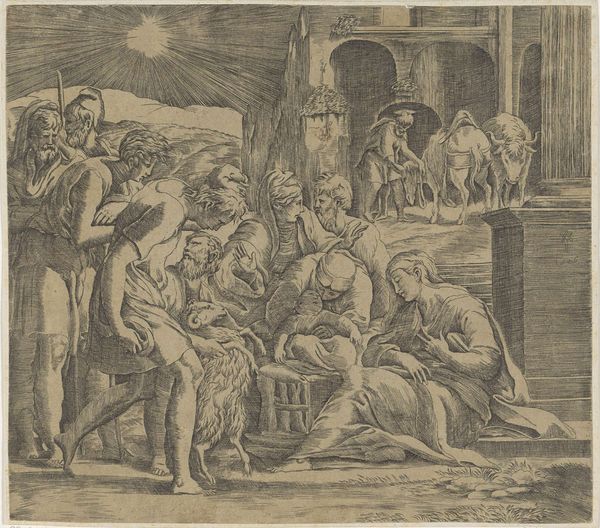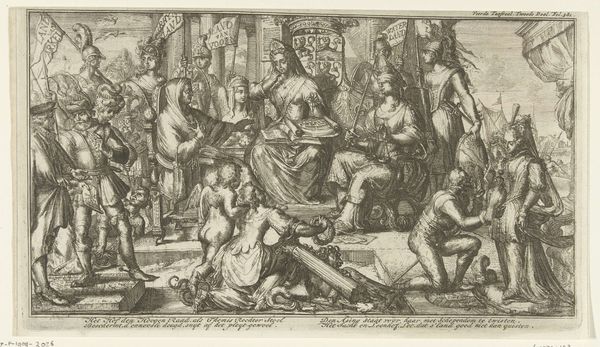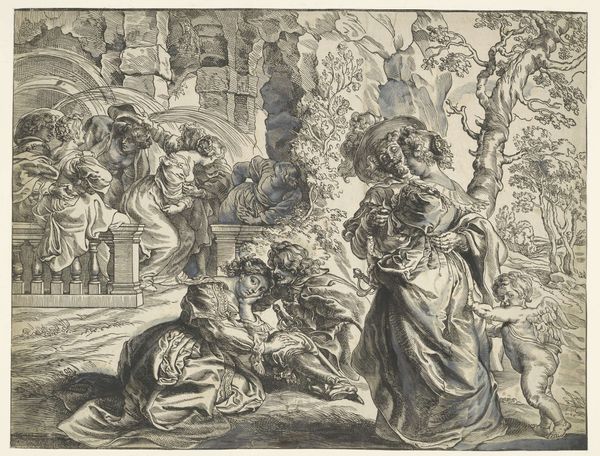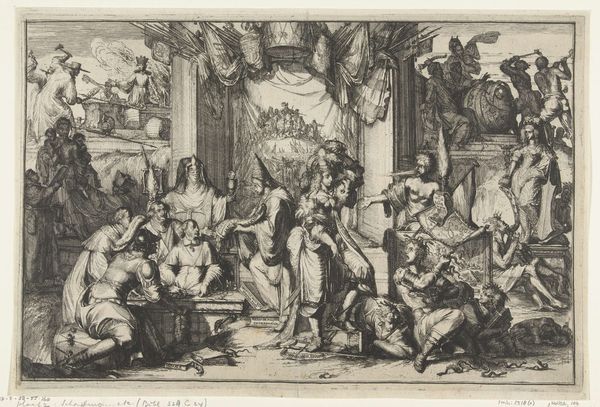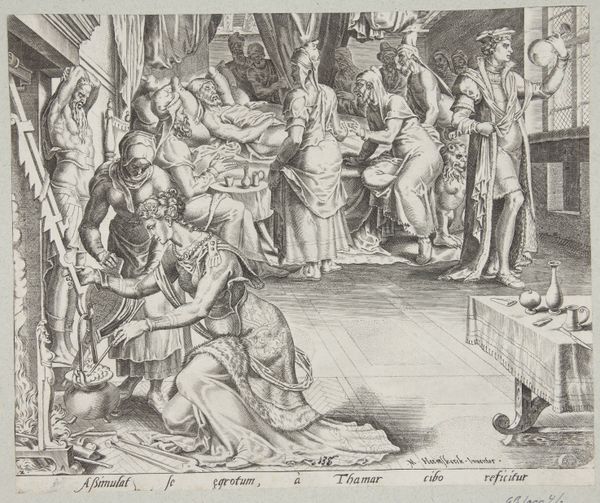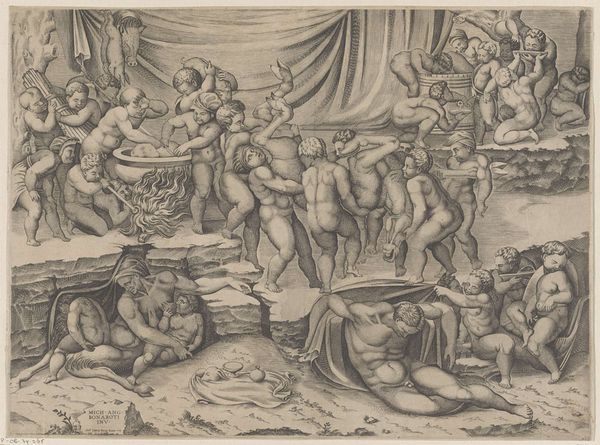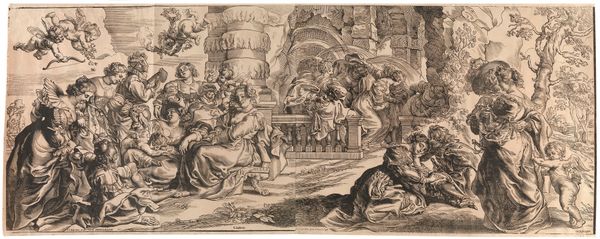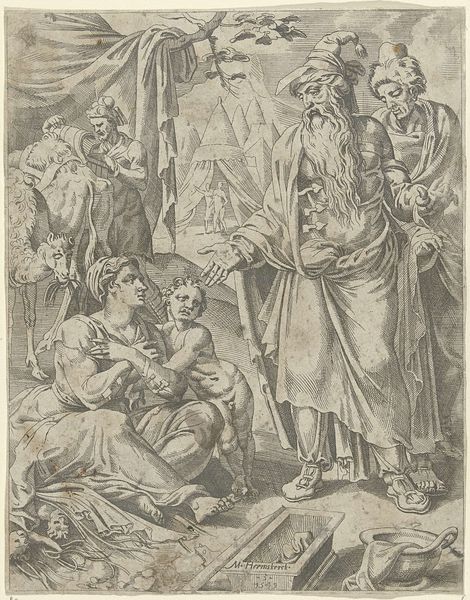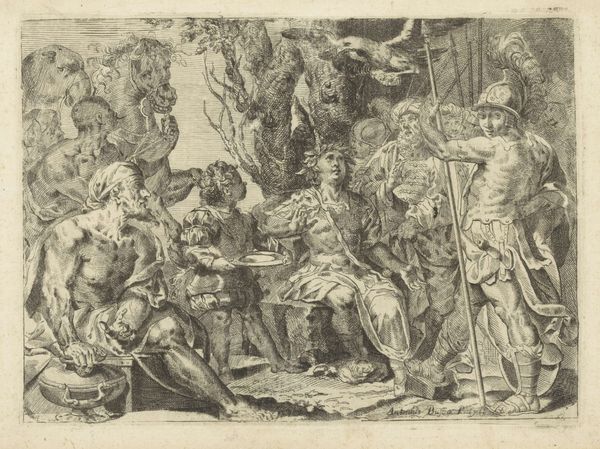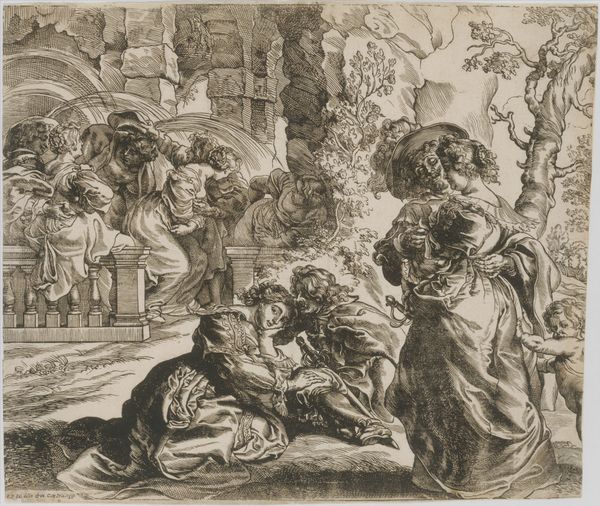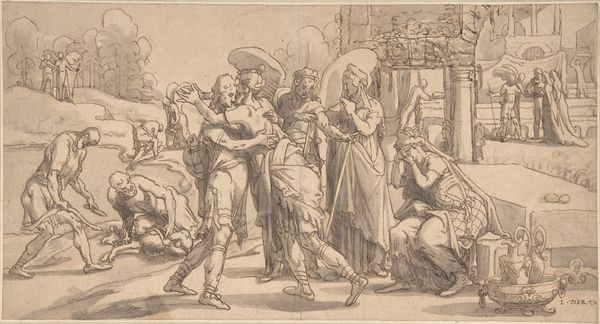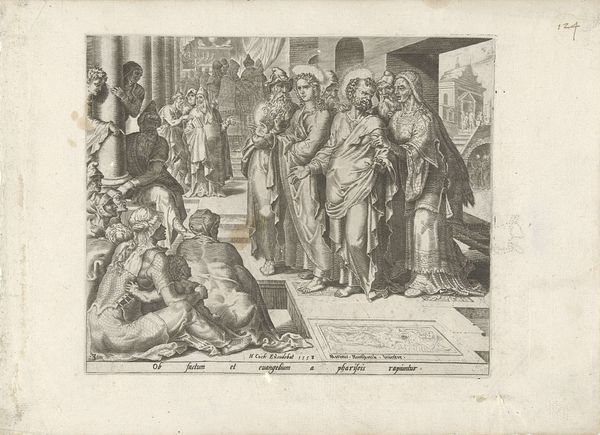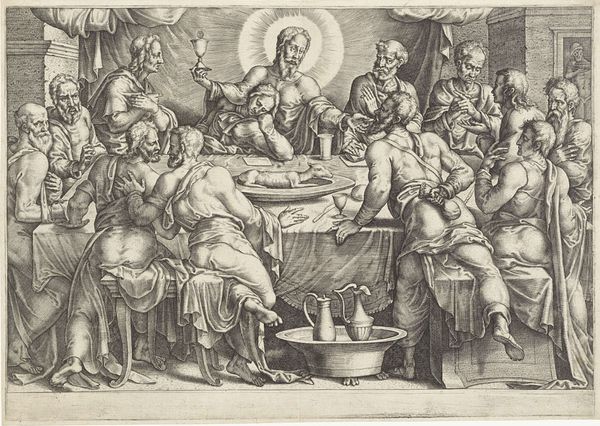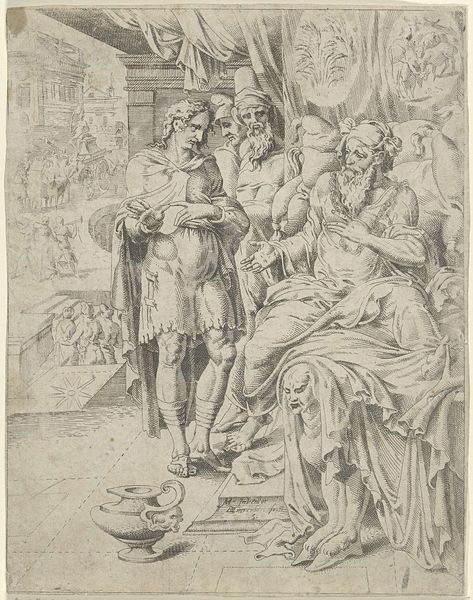
drawing, print, ink, pen, engraving
#
drawing
#
ink drawing
#
pen drawing
# print
#
mannerism
#
figuration
#
ink
#
pen work
#
pen
#
history-painting
#
engraving
Dimensions: width 372 mm, height 248 mm
Copyright: Rijks Museum: Open Domain
Curator: Dirck Volckertsz Coornhert created this engraving around 1549, it's called "Jacob blessing the sons of Joseph," and is held here at the Rijksmuseum. Editor: Wow. My first impression is one of overwhelming muscularity! Everyone seems carved from stone. It's oddly… theatrical. Almost staged. Curator: Mannerism does lean into the dramatic. Notice the highly stylized figures, the almost artificial poses? Coornhert's drawing aims to evoke the power and grandeur of this Old Testament scene. Consider the historical context; printmaking was becoming increasingly important. These engravings democratized biblical narratives, disseminating religious ideas far and wide. Editor: I get that, but does everyone have to flex quite so hard? The detail in the musculature is incredible. You can almost feel the tension in Jacob’s arms as he lays his hands on those boys. The light catches on these bodies almost perfectly...I like the lion-legged chair. That adds a nice little flair to an otherwise overly serious picture. Curator: It’s a statement, surely, of power and legacy. Look, this isn’t just about surface appeal; it's about the visual communication of authority. These are carefully crafted images meant to shape religious understanding. Didactic almost. Editor: Oh, I know the agenda, but there's something unintentionally funny about this scene, as if Jacob is blessing some seriously buff toddlers, getting in their daily reps on the regular. I see what he was going for but he made it a bit absurd. Curator: Perhaps. The line between reverence and… unintended humor, as you say, can be quite fine in art, especially when viewed through a contemporary lens. The Mannerist style definitely played with pushing the boundary between idealisation and...something a little unsettling. Editor: Exactly. The world-changing events of the time definitely brought something unusual to even the more standard portrayals. It's pretty crazy when you think about how powerful art could be for so long. Curator: Well, powerful indeed. A work like this shows us how religious narratives were not just read, but actively constructed and disseminated through visual means. It’s a fascinating insight into the power of the printed image at a critical moment in history. Editor: For me, it's more a quirky reminder that artists, no matter their intention, sometimes end up creating something hilariously strange and thought-provoking. It definitely catches your eye and keeps you looking!
Comments
No comments
Be the first to comment and join the conversation on the ultimate creative platform.
